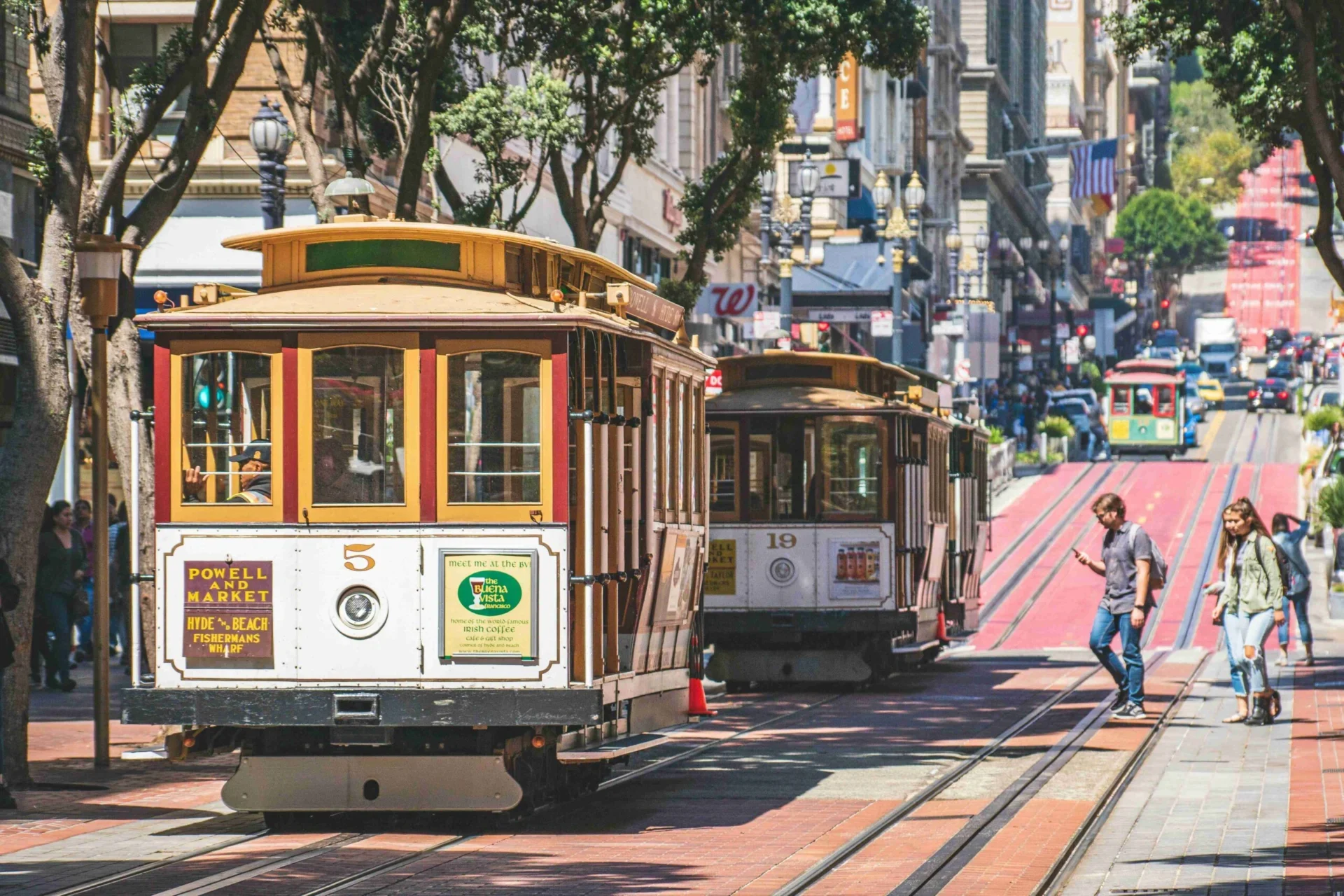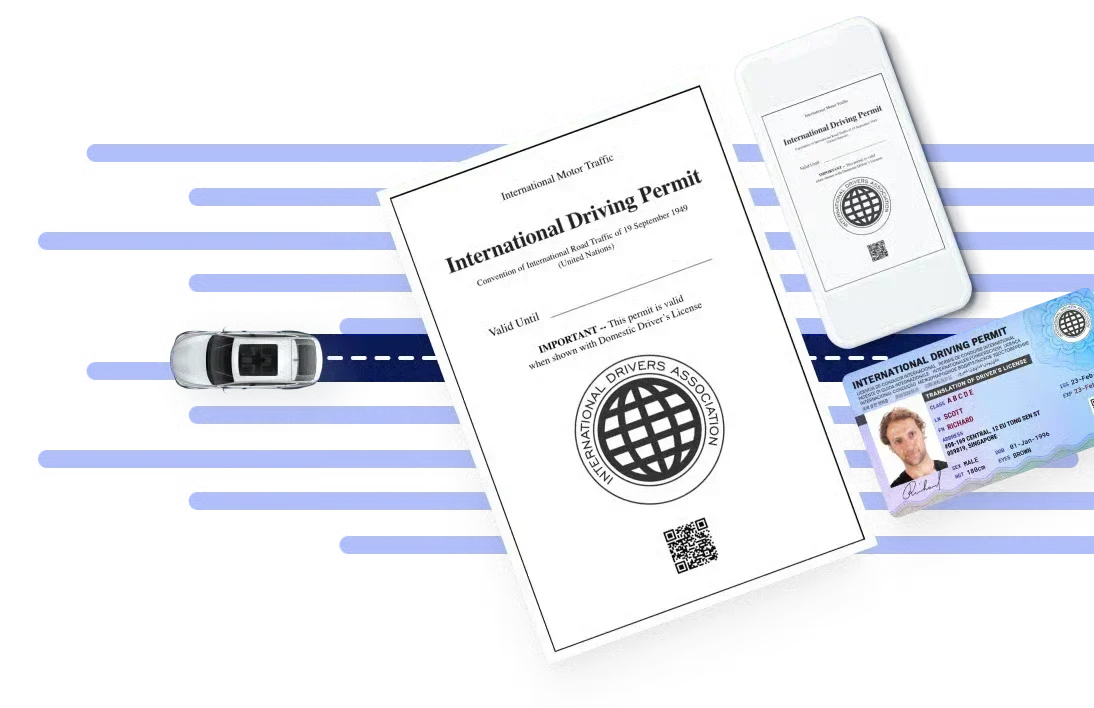Securing a passport in the USA is your golden ticket to global exploration. Think back to 1789, when Thomas Paine remarked on the boundless freedom of American citizenship—today, that freedom extends across oceans with a US passport in hand.
Check if you need an IDP NowWhere was your license issued?
Destination
The process might seem daunting, but we’ve distilled it into manageable steps, ensuring you can confidently navigate through forms and fees without sweat. From gathering documents to snapping that official photo, we’ll guide you past common hurdles so your travel dreams don’t hit any snags. After all, you may also need your passport when learning how to obtain insurance in the USA.
1. Understanding Passport Necessity
Travel Requirements


Before you plan a trip, know the entry rules of your destination. Each country has its own laws for visitors. Some places may not need a visa for short visits. But others will ask for one even if you stay just a few days.
You also have to check your passport’s validity. Many countries want it to be valid for at least six months after you enter.
Traveling without the right documents can lead to trouble. You might not be able to fly or could get sent back home.
Identity Verification
When getting a passport, prove who you are with a government ID. A driver’s license or birth certificate often works best here.
Sometimes, more than one ID is needed, though. Use things like social security cards or employee IDs as secondary proof. This helps confirm your identity further.
If there’s any name mismatch across documents, fix them before applying. This avoids delays in getting your passport processed.
Legal Necessities
The law says certain things must be in order before getting a passport:
1. Child support payments should be up-to-date.
2. Federal loan defaults must be resolved, too.
3. Any outstanding arrest warrants have to be cleared as well.
Not following these rules can stop you from securing that important booklet — the passport!
If legal issues are like these, work them out first with authorities or through legal advice.
2. Types of US Passports
Passport Book
The passport book is a must for flying out of the country. It’s your ticket to global travel by air. You can pick from two sizes: standard or large. The standard size has 28 pages, while the large one has 52 pages for many stamps.
Adults get their passport books valid for ten years. Kids under 16 have theirs good for just five years. Remember, some countries won’t let you in if your passport expires soon.
Passports cost money, but they are an investment in adventure and opportunity worldwide.
Passport Card
Now, let’s talk about the passport card. This one’s different from the book because it’s only good for land or sea trips to Canada, Mexico, Bermuda, and the Caribbean. It’s wallet-sized, so you can always carry it around with ease.
But remember this key point – no flying with a passport card! If you want to catch a flight somewhere far away, you need that passport book we discussed earlier.
It lasts as long as the passport book does – ten years for grown-ups and five years if you’re not yet 16.
Special Issuance
Finally comes something called a special issuance passport. These aren’t your everyday passports; they’re special versions like diplomatic ones used by government folks when they’re on official business abroad.
If someone works for Uncle Sam and needs to go overseas officially, this is what they’ll use:
1. Diplomatic passports – For diplomats on duty outside America.
2. Official passports – For those doing government work but who aren’t diplomats.
3. Service passports – For other types of official travels needing U.S. approval.
These come at no charge if you qualify, so working with our government helps here big time!
You will need permission from higher-ups in U.S. agencies before getting these special passbooks stamped into service!
3. Eligibility Criteria
Citizenship Proof
To get a U.S. passport, you must show proof of citizenship. This is your first step. You can use a birth certificate if you were born in the States. A naturalization certificate works if you become a citizen later on. Some people have a Consular Report of Birth Abroad—this is also good.
If you’ve had a passport before, bring it along, too. It helps to prove who you are.
Remember, these documents should be original or certified copies—not photocopies!
Identification Documents
When applying for your passport, identification is key! Bring originals and make copies of each one just in case they ask for them.
Your Social Security number is very important here; don’t forget it! As for IDs that work well? A driver’s license will do fine, as will military ID cards if that’s what you have.
Ensure these items are current and valid; expired documents might not be accepted!
Age Considerations
Now let’s talk about age because it matters when getting your passport. Kids under 16 need their parents to say “yes” by signing forms—it’s all about consent.
Teens who are 16 or 17 might still need mom or dad there when they apply, but not always—it depends on certain things like which parent can come along at the time of application.
Different forms exist for minors—and so do different fees. Always check the latest rules because sometimes they change!
Understanding these requirements makes securing a U.S. passport smoother and faster than going in unprepared would allow—especially after choosing between types of passports, as discussed earlier! Keep this info handy as we move on to filling out applications correctly—the next big step towards getting that shiny new travel document.
4. Preparing for Application
Gather Documents
Before applying for a passport, you need to collect some important papers. First, find proof of who you are and where you were born. This could be a birth certificate or an old passport. Next, make copies of these documents. It’s good to have extra in case they ask for more.
Ensure all your papers are ready before your appointment or when sending them by mail. This makes things go smoothly.
Here’s what to do:
1. Get all the necessary documents together.
2. Make clear photocopies.
3. Check everything is correct and complete.
4. Put them in order so they’re easy to find.
This helps applicants stay organized and avoid delays.
Photo Specifications
Getting your photo right is super important! The rules say the background must be white, and you shouldn’t wear glasses or smile big smiles—just look normal with no big facial expressions.
Remember:
- The photo should be taken within six months to show your appearance.
- A professional place that takes passport photos might be best because they know all the rules about size and style.
It’s key that applicants follow these steps carefully because if the photo isn’t just right, it can cause problems with their application later on!
Here are some tips for a great passport photo:
Check if you need an IDP NowWhere was your license issued?
Destination
- Wear clothes that you would normally wear every day (no uniforms).
- Keep hair off your face so it doesn’t cover any part of it.
5. Application Process Overview
Form DS-11
After preparing for your application, the next step is to fill out Form DS-11. This form is for those getting a passport for the first time. It asks about who you are and where you plan to travel. Make sure every detail you write is correct. You can find this form online or at a passport office.
Remember, do not sign the form right away! Wait until a passport agent tells you to sign it when you submit your application in person.
Submission Methods
When you submit your completed Form DS-11, first-time applicants must apply in person. You cannot send your application through mail if this is your first passport. To find out where to go, look up acceptance facilities or agencies on the State Department website.
Pick one that works best for you and make plans to visit.
Fees Payment
Paying fees is part of getting a new passport, too. The cost depends on things like how old you are and how fast you need the passport. Use the fee chart on the State Department website to figure out what you owe.
Here’s what else matters when paying:
1. Each place may take different ways of payment.
2. Some accept cards; some only take checks or money orders.
3. If applying in person—don’t forget an extra fee called an ‘execution fee’’
Always check which payments they will take before going!
6. Appointment and Interview
Scheduling
After understanding the application process, you need to make an appointment. You can do this at a passport agency if you have urgent travel plans. It’s best to use the online scheduling system. This is faster and more convenient than other methods.
There are times when it might be hard to get an appointment quickly. During busy travel seasons, like summer or holidays, wait times can be long. So try to schedule your appointment as soon as you know you’ll need a passport.
Interview Preparation
Next comes the interview part of getting your passport in the USA. They will ask questions at this meeting. Be ready to talk about where and why you’re traveling. They also want to check that your documents are real.
Dressing nicely for your interview is important because it shows respect for the process. Think of it like going to a job interview or a school event where looking good matters.
Make sure you arrive on time with all your papers sorted out properly. Being organized helps everything go smoothly!
Remember:
- Questions about travel and documents will come up.
- Dressing well is key.
- Being there early with everything ready is smart.
7. Processing Time and Tracking
After scheduling your appointment and completing the interview, it’s time to discuss processing times and how you can track your passport application.
Standard vs. Expedited Service
When applying for a passport, there are two types of processing: standard and expedited. If you don’t need to travel soon, choose standard processing. It costs less but takes longer. However, expedited service is available if you must travel within 72 hours for an emergency.
Expedited service has extra fees but offers faster results. But remember, even with this option, getting your passport by a specific date isn’t guaranteed. Always plan to avoid delays.
Regardless of which option you pick, it’s wise not to wait until the last minute.
Online Tracking
Once your application is submitted, tracking its progress becomes important. You’ll receive an application locator number, which lets you check your status online anytime.
The updates will show stages like ‘In Process,’ ‘Approved,’ or ‘Mailed.’ Don’t worry if there’s no update right away; it usually takes 7–10 days before submission before tracking info appears online.
If technical issues arise when tracking online or if there are questions about the process status, contacting customer support might be necessary.
8. Receiving Your Passport
Delivery Options
After you have tracked your passport and know it’s on its way, choosing the right delivery option is key. If you need your passport quickly, expedited delivery may be best. It costs more but gets to you faster. Routine delivery works well and saves money for those not in a rush.
Make sure your passport arrives safely. Choose a secure location where mail does not get lost or stolen often. This could be your home or even work if allowed. Some people use post offices for safer handling of their important documents.
To stay informed, sign up for delivery notifications if available. These alerts tell you when your passport has been sent out and when it should arrive at your door.
Activation Steps
Once you receive your new passport, there are a few steps before it’s ready to use.
Firstly, look for the page that says ‘signature’. Use a pen to sign this area as soon as possible. Signing makes the document valid, meaning it can be used legally for travel.
The next step is filling in emergency details. There will be space inside the passport to write down contacts who can help if something goes wrong while away from home.
Finally, take some time to flip through other pages too! They contain useful information about how to use the passport correctly and its features, like electronic chips and watermarks that protect against fake copies being made.
9. Renewal Process
Eligibility for Renewal
Before you think about renewing your passport, check a few things: Ensure your passport’s expiration date is within the next year or has already expired. Changes in your name as you got married. Also, if it’s damaged, you might need to apply for a new one instead.
To sum up:
- Confirm the expiration date.
- Verify any big changes with proper documents.
- Ensure your passport is not damaged.
Form DS-82
For mail-in renewals, use only Form DS-82. Fill out each part of this form carefully to avoid delays. You will need a recent photo, too. This photo should meet certain rules – like size and background color.
Here are the steps to follow:
1. Get Form DS-82.
2. Complete all sections fully and accurately.
3. Attach a correct passport photo following the guidelines.
Renewal Fees
Finally, let’s talk money! Check how much it costs on the State Department website first because fees can change over time. Remember that credit cards won’t work if you’re mailing in your renewal – checks or money orders only! And if you’re in a hurry? There’s an extra fee for faster service called expedited renewal.
Keep these points in mind:
- Look up current fees online.
- Prepare payment as an e-check or money order.
- Add extra if choosing expedited service.
Final Remarks
Securing your US passport is like unlocking the door to global adventures. You’re now armed with the know-how, from understanding the need and picking the right type to nailing the eligibility criteria and acing the application process. Remember, it’s not just about filling out forms; it’s about starting a journey that could take you anywhere from the Eiffel Tower to the Egyptian pyramids.
Opt for distinctive local transportation modes like the subway in New York or cable cars in San Francisco for an authentic American experience. For convenience and flexibility, taxis or rental cars are readily available. Remember to carry your international driver’s license in the USA and familiarize yourself with US traffic laws.
If you are a non-US citizen, choose special travel methods, like the subway in New York or the cable cars in San Francisco, to experience America. If you need to go places on your own time, taxis or rental cars are easy to find. Don’t forget to have your international driver’s license with you in the USA.
It’s also important to familiarize yourself with the requirements before traveling to the USA , including learning about US traffic rules. To make this easier, look for a good driving guide that covers everything you need to know for driving in the USA. This will help you understand the rules and make your trip smoother.






